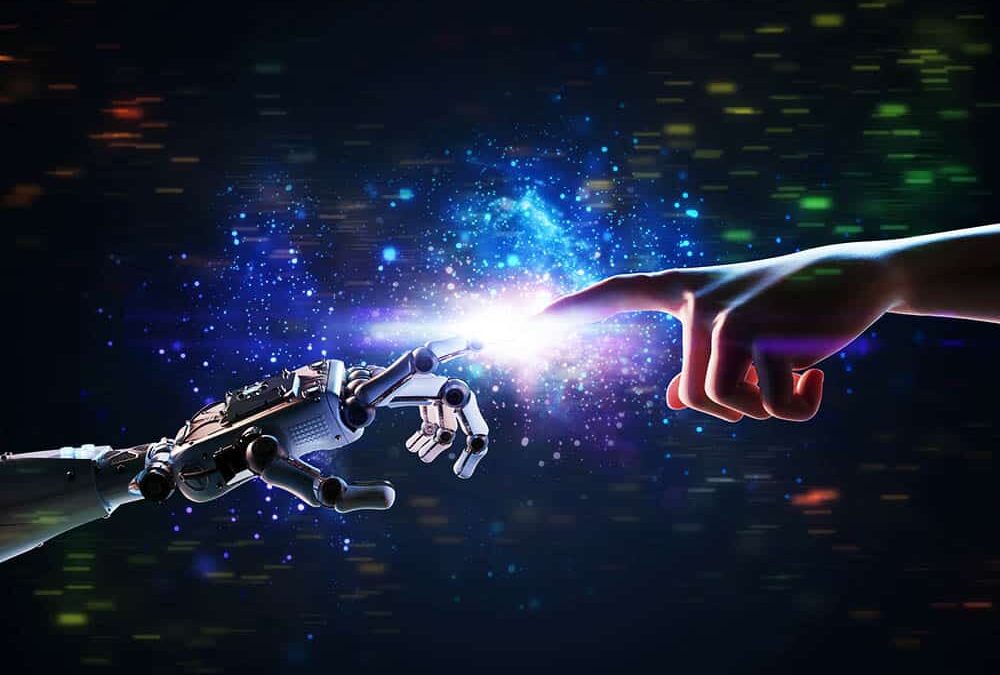Robots: The Future of Technology
At its core, the development and implementation of robotics in our daily lives is not a new concept. From automating processes on the assembly line to mechanizing simple tasks like opening doors and turning off lights, robots have been slowly but surely making their way into our lives. But recently, the world has seen an exponential increase in the range and sophistication of robots available. From smart home devices like Alexa and Google Home to self-driving cars and advanced medical robots, we are witnessing a revolution in the use of robots in our daily lives. Whether we like it or not, the robots are here to stay, and they are here to change our lives.
The Benefits of Robotics
The development and use of robotics has numerous benefits. For one, robots can make tasks more efficient and accurate. They don’t get tired and can function 24/7, which can increase productivity and quality control. Additionally, robots can handle tasks that are too dangerous or difficult for humans to perform, such as exploring hazardous environments or performing complex surgeries. Unlike humans, robots are immune to illness, emotions, or distractions, allowing them to focus solely on the task at hand. Lastly, robots can help improve our quality of life by assisting with daily tasks, making our homes smarter, and freeing up our time to pursue other interests.
Challenges with Robotics
Of course, the rise of robotics isn’t without its fair share of challenges. One of the most pressing is the potential loss of jobs. As robots become more advanced and capable, it is possible that they could replace humans in various industries, leading to unemployment and income inequality. Additionally, the development of robotics raises ethical concerns, particularly in areas such as privacy, surveillance, and military use. Robots can be programmed to collect data on our behavior, our preferences, and even our thoughts, raising questions about who has access to this information and how it can be used.
Robots in the Home
Perhaps the most visible and widespread use of robots today is in the home. From Roombas to smart thermostats, we are surrounded by gadgets that are slowly taking over our living spaces. But what exactly are these devices doing for us, and how can they revolutionize our lives?
The most obvious benefit of smart home devices is convenience. With the touch of a button or the sound of your voice, you can control your lights, adjust your temperature, and turn on your favorite TV show. But convenience aside, these devices can also save you money. Smart thermostats, for example, can learn your preferences and habits, adjusting the temperature in your home accordingly. Over time, this can lead to significant energy savings and lower utility bills.
Another area where robots can improve our lives is in the kitchen. With robotic assistants like the Thermomix and the Instant Pot, cooking has never been easier. These devices can chop, blend, steam, and slow-cook your meals, simplifying the cooking process and freeing up your time. Additionally, these devices can help you eat healthier by enabling you to cook your own meals from scratch, avoiding the processed and unhealthy options found in many restaurants and prepackaged meals.
Robots in Medicine
One area where robots are making a particularly big impact is in medicine. From surgical robots to assistive devices, robots are changing the way we approach healthcare.
One of the most exciting areas of medical robotics is surgical robotics. These machines can perform minimally invasive surgeries with unparalleled precision, reducing the risk of complications and enabling faster recovery times for patients. Additionally, surgical robots can enable surgeons to perform surgeries remotely, allowing them to operate on patients who are in remote or dangerous locations.
Assistive robotics is another area where the benefits of robots are clear. Devices like exoskeletons can enable paralyzed patients to walk again, while prosthetic limbs with robotic components can perform intricate tasks with ease. Additionally, robots can be programmed to assist with physical therapy, enabling patients to recover from injuries or surgeries more quickly and effectively.
The Future of Robotics
Looking forward, the potential uses of robots are nearly limitless. Advancements in artificial intelligence and machine learning are enabling robots to think and act more like humans, expanding their capabilities and opening up new possibilities. Additionally, the development of collaborative robots, or «cobots,» could enable humans and robots to work together in a more seamless and productive way.
But with these exciting possibilities come challenges. As mentioned earlier, the potential loss of jobs is a serious concern, particularly in industries like manufacturing and transportation. Additionally, the use of robots raises ethical questions about privacy, surveillance, and military use that must be addressed.
The Bottom Line
A world filled with robots may seem like something out of science fiction, but the truth is, it’s already here. From our homes to our hospitals, robots are changing the way we live and work. While there are undoubtedly challenges and uncertainties associated with this shift, there are also amazing possibilities and benefits. Whether it’s freeing up your time to pursue your passions or enabling a paralyzed patient to walk again, the potential of robots is truly revolutionary. The key is to ensure that we use this technology wisely and responsibly, keeping our eyes on the future while addressing the challenges of the present.
- Why Venture Capital is Essential for Startups: The Key to Unlocking Success - 28 de mayo de 2023
- Revolutionize Your Business with E-commerce: The Ultimate Guide to Success - 28 de mayo de 2023
- Why Patents are Crucial for Protecting Innovation and Driving Economic Growth - 28 de mayo de 2023
